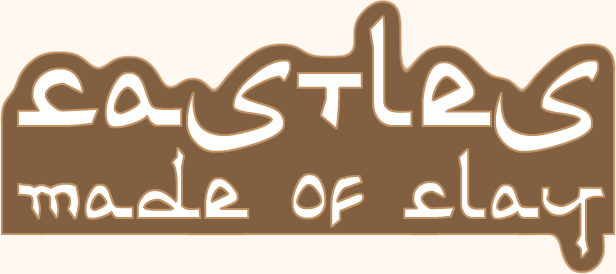

|
The earthen architecture of Yemen surely represents the pinnacle of human
technical achievement in the field of sustainable shelter construction.
It has no parallel in modern architecture, only evil clones -- the
ice-cold steel and glass skyscrapers of the so-called International Style.
But Mies van der Rohe's plastic bastards cannot be justified by our
knowledge of the existence of multi-level dwellings that predate the Age
of Oil -- they can only be ridiculed and riled against. It's true, we now
have no choice but to gain altitude, to endure living arrangements of
greater density -- but we will do so in order to protect the little nature
that's left, not in order to despoil it. In March of 2006, British lime plaster master Julie Haddow and myself conducted a two-week fact-finding mission in Yemen. This conservative country has been culturally isolated for ages, so only scant reports of its marvelous mud architecture have managed to reach us outside of Arabia. Arab architect Salma Samar Damluji has done an excellent job of documenting the monumental feats and building techniques of the Yemeni people, but most of her photos are only in black and white. Julie and I took 1,000 still photographs in full colour and several hours of digital video during those two weeks; these are 40 of the best of the bunch, out there on the internet for all to see. Prepare to be shocked and awed. The first few photos are from the capital city of Sana'a. Strictly speaking, these are not adobe brick buildings; these beautiful gingerbread castles were assembled from clay fired bricks, baked in colossal kilns, using fossil fuels. But they are just so stunning that I had to include them in the slide show. They also feature the extensive use of nura, or lime, the waterproofing course of choice of natural builders, Julie's specialty. And maybe most importantly, they establish a pattern of incredible creativity. With millions of identical building blocks, infinite variation is assuredly possible. My only regret is that our amateur equipment could not possibly capture Sana'a at night, when the light that diffuses out of the old city's stained-glass windows turns the town into a gargantuan game of Lite-Brite! After a few photos of the ordinary men, women, and children that inhabit these homes, we have the abandoned earth houses of Baraqish and Marib and Tarim. While they've been mostly uninhabited for centuries, there are some families that still squat there, a testament to the resilience of these people and these places. What's especially instructive about these ghost towns is that they offer us a unique opportunity to examine the innards of the mud structures. Over the ages, without protection from the rain, they melt back into the earth, slowly revealing their secrets, showing us how they were built. Amazingly, even after the introduction of cement, the mud construction continues in an almost identical fashion till this very day. Ah, Shibam. The Manhattan of Mud. To simply be able to stroll through your streets, I have traveled thousands of miles at great expense and great peril. But it was all worth it, to be able to show you these images: eight-storey high skyscrapers. Look at them! Just look! They are made of mud, mud, and only mud! I was only able to photograph them with the aid of a wide-angle lens, so densely were these towers packed together. Let these pictures travel to the ends of the earth, and let them be smacked down on the (old-growth) mahogany desktops of the people in power, and let the cries of the anarchitects resound throughout the land -- Another world is motherfucking possible! Three series of photographs follow: the former palace of the Sultan of Seiyun, and two villages in the Valley of Wadi Do'an. The first set of pictures demonstrates that mud can be used to build not only tall boxes for the common people, but ornate cathedrals of stunning detail that rival anything produced by stacking capital. The second set of pictures shows the "San Francisco" of Sand, how these mud skyscrapers can be built on top of a mountain range, not only on flat land. And the third set of pictures -- I guess you could call it the Los Angeles of Lime, or, more accurately, the Disneyland of Sand -- personally, I would decorate differently, but the point here is that the range of options in earth architecture is virtually limitless! Closing with the great mosque at Rada, we are only sharing photographs of its exterior. To see its majestic earthen interior, you'll have to see Yemen for yourself. Due to a resurgence of interest in the vernacular building practices, the mud mosque was recently renovated, and it is a sight to behold. But we've said enough, I've believe we've made our point. If you aren't convinced by now, then there's nothing that I could possibly say or do to make you see the mud. But if seeing in believing, then I have made you a believer in the beauty and the magic of mud. I expect to see you next on a cob construction site, getting down and dirty and building community, shaping space and making place.
|
